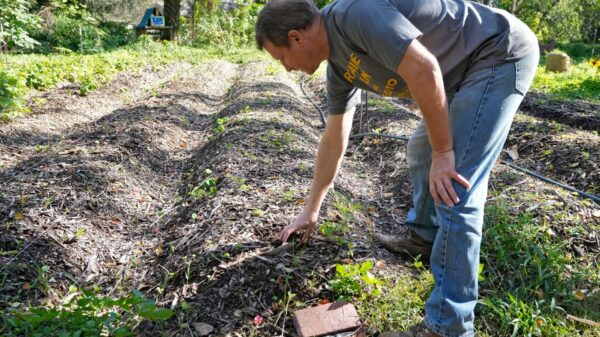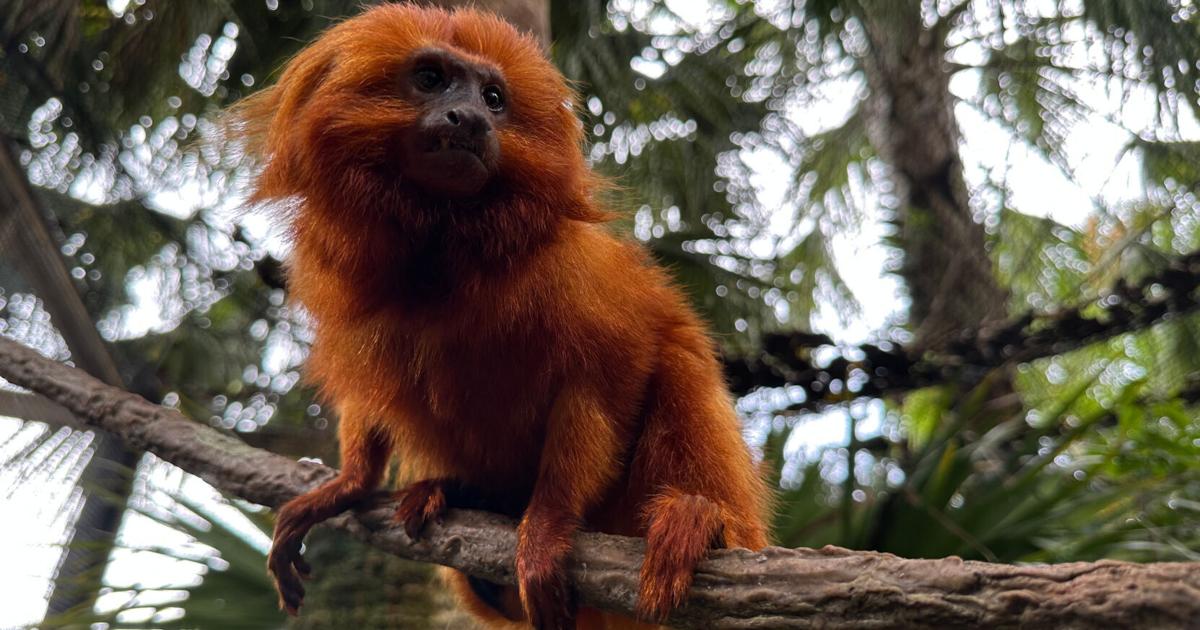In an exciting development, the Palm Beach Zoo and Conservation Society in West Palm Beach, Florida, has introduced a unique habitat where golden lion tamarins and Hoffman’s two-toed sloths coexist. This new arrangement, which opened in August 2023, reflects the zoo’s commitment to conservation and education by highlighting the natural behaviors of these two species, both indigenous to the forests of South America.
The habitat features a lush canopy of trees, designed specifically to accommodate the playful nature of the golden lion tamarins, known for their striking orange mane, while providing a comfortable space for the more sedentary sloths. According to Devin Clarke, a senior supervisor at the zoo, the sloths may be perceived by the tamarins as “more furniture” due to their relaxed lifestyle. “They like to sleep during the day, a little bit more active at night. So just watching, you know, like their couch walking around at night isn’t too scary for them,” he explained.
Visitors to the zoo can enjoy a close-up view of the tamarins and sloths interacting within their new space. It includes an intricate network of vines, ropes, and tunnels that encourages exploration and interaction. Clarke emphasized the importance of this setup, stating, “Just being able to see them up close and personal is really a way to inspire connection.” He believes that fostering a connection with these animals can motivate people to consider how they can contribute to the conservation of their wild counterparts in regions like Brazil and Central America.
The golden lion tamarin population has rebounded significantly due to conservation efforts. In the 1970s, fewer than 200 golden tamarins remained in the wild. Through a collaborative plan involving 40 zoos accredited by the Association of Zoos and Aquariums, their numbers rose to over 5,000 as of last year. Clarke noted that the previous tamarin habitat at the zoo was smaller, prompting the zoo to enhance the space for better well-being and enrichment.
In addition to providing a more natural environment for the animals, the habitat incorporates native Florida plants. Clarke pointed out that planting native species is a simple yet effective way for individuals to contribute to local ecosystems, even in urban settings. “Even if you have an apartment, just putting out a potted plant that’s a Florida native plant helps kind of revitalize the ecosystem that we have here in South Florida,” he said.
The zoo’s president and CEO, Margo McKnight, expressed enthusiasm about the new habitat’s role in inspiring visitors. “We hope to foster a love for wildlife in wild places, including our own backyards. We hope every person leaves inspired to be a wildlife hero in their own community,” she remarked.
This initiative showcases how zoos can play a vital role in conservation and education, encouraging visitors to engage with wildlife and understand the importance of preserving natural habitats. The golden lion tamarins and sloths at the Palm Beach Zoo not only serve as attractions but also as ambassadors for their species, helping to raise awareness about the threats they face in the wild.





































































